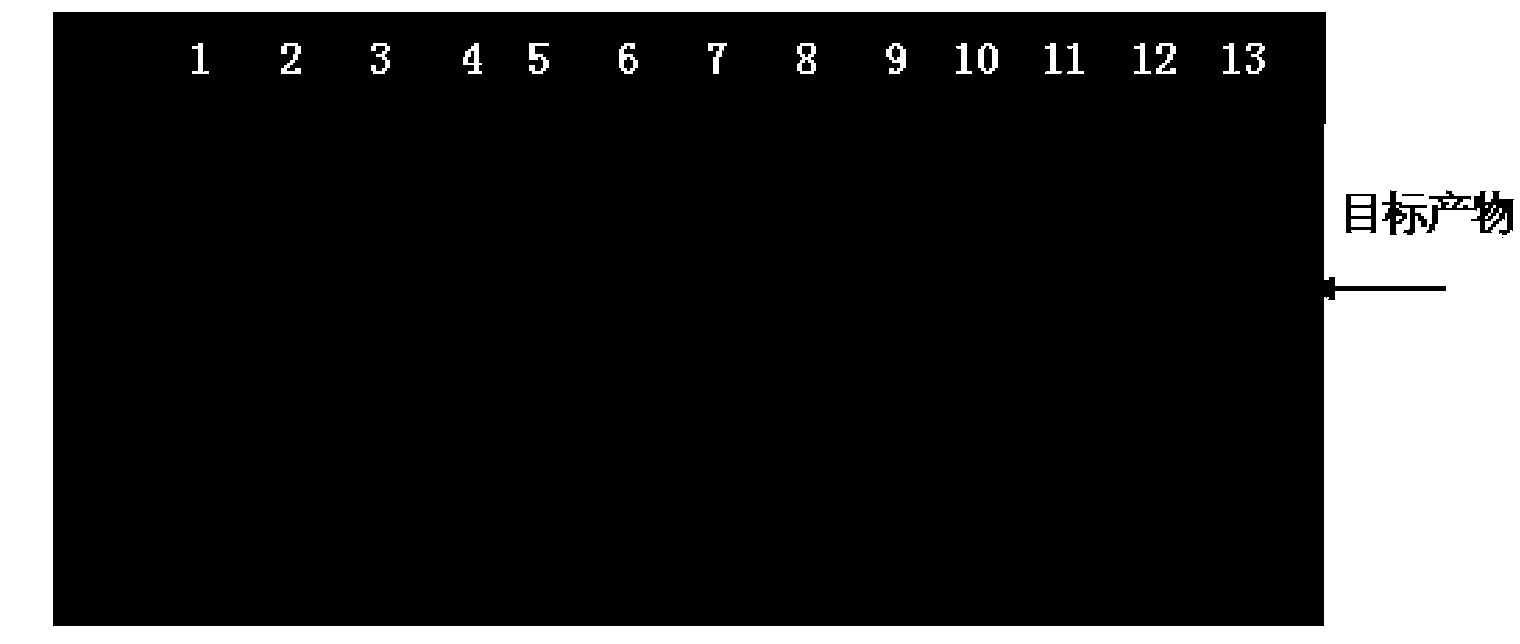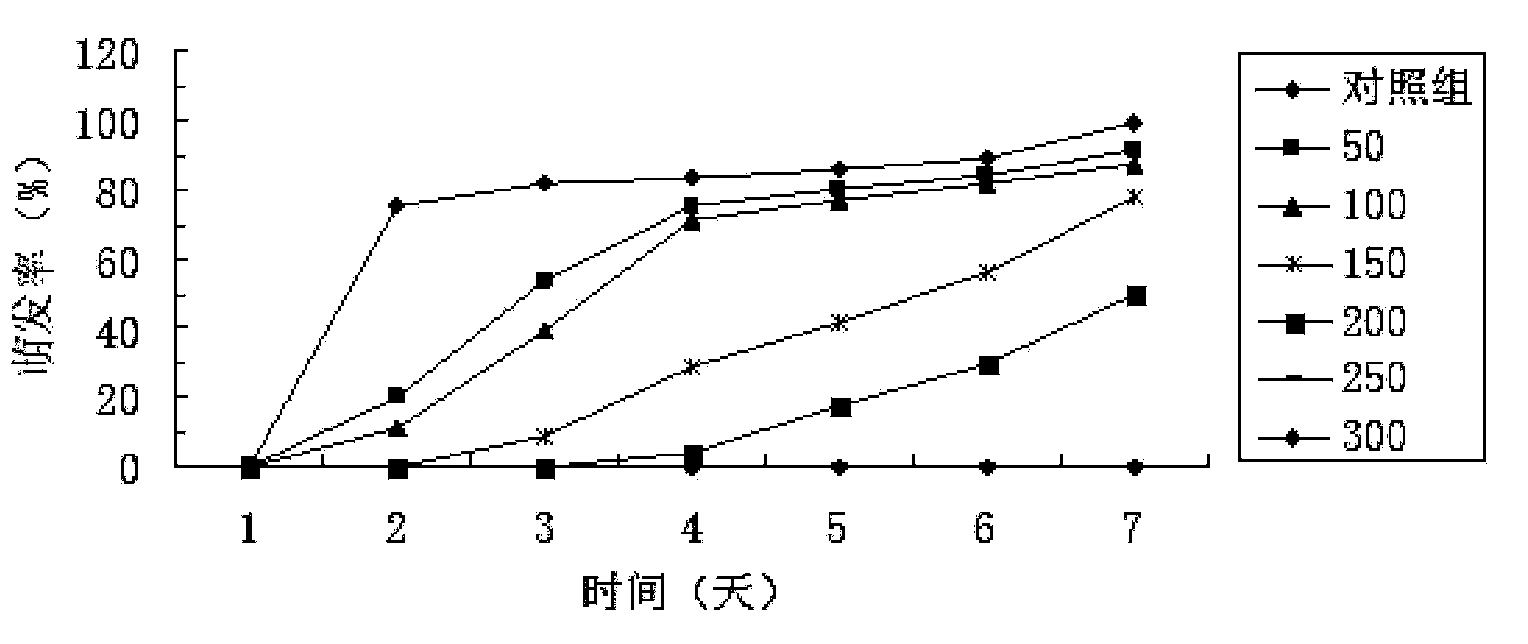Application of TT1 gene in improving saline alkali tolerance of plants
A gene and plant technology, applied in the field of TT1 gene in improving plant salt-alkaline tolerance, to achieve the effect of improving plant salt-alkali tolerance, the method is simple and effective, and the content of proline is increased
- Summary
- Abstract
- Description
- Claims
- Application Information
AI Technical Summary
Problems solved by technology
Method used
Image
Examples
Embodiment 1
[0034] Example 1: Cloning and acquisition of TT1 gene
[0035] Using the atp6 (genebank gi: 89279377) gene in rapeseed as the bait protein, an EST sequence (shown in SEQ ID NO: 3, encoded The amino acid sequence is shown in SEQ ID NO: 4), and then according to the sequence screened in this section, the method for improving plant and microbial resistance described in the present invention is obtained by 5' RACE (seeing the 5' RACE method data disclosed by Takara Company). The nucleotide sequence of the thermal gene is shown in SEQ ID NO: 1 in the sequence listing. Primers were designed according to the nucleotide sequence shown in SEQ ID NO: 1,
[0036] Upstream primer (SEQ ID NO: 7): 5'-ATGTCGGATCATTTGAGTTTATG-3',
[0037] Downstream primer (SEQ ID NO: 8): 5'-TCAGACTGGTGTTGGGTTGGATAT-3'.
[0038] Then the nucleotide sequence shown in SEQ ID NO: 1 is amplified from the rapeseed cDNA by PCR.
[0039] The PCR program is as follows:
[0040] 1.95℃ for 4min (pre-denaturation) ...
Embodiment 2
[0064] Example 2, Preparation of Transgenic Arabidopsis Plants and Obtaining of Seeds
[0065] 1. Obtaining transgenic Arabidopsis plants and seeds
[0066] Primers were designed according to the nucleotide sequence shown in SEQ ID NO: 1,
[0067] Upstream primer (SEQ ID NO: 13): 5'-CGC GGATCCATGTCGGATCATTTGAGTTTATG-3',
[0068] Downstream primer (SEQ ID NO: 14): 5'-CCGGAGC TCTCAGACTGGTGTTGGGTTGGATAT-3'.
[0069] Through PCR, the complete nucleotide sequence shown in SEQ ID NO: 1 is amplified from rapeseed cDNA,
[0070] The PCR program is as follows:
[0071] 1.95℃ for 4min (pre-denaturation)
[0072] 2.95℃ 30s (denaturation)
[0073] 3.53℃ 30s (refolding)
[0074] 4.72℃ 50s (extension)
[0075] 5.2~4 steps cycle 30 times
[0076] 6.72℃ for 5min (final extension)
[0077] Store at 7.4°C.
[0078] Purify the PCR product (see Qiagen’s PCR Product Purification Kit Instructions), then digest it with BamH1 and Sac1, recover from the gel, and connect it to the vector pBI1...
Embodiment 3
[0097] Embodiment 3, the influence of different concentrations of NaCl on the germination rate of Arabidopsis thaliana
[0098] Salts in saline-alkaline soils are usually NaCl, Na2SO, Na2CO, and NaHCO3, etc. Salt stress can not only reduce the water potential, but also cause ion stress caused by the increase of Na ions, which affects the absorption of nutrients such as K ions and Ca ions by plants. causing damage to plants. Therefore, NaCl was used to simulate salt stress conditions in this experiment.
[0099] The prepared MS medium (recipe in Table 1, pH adjusted to 5.8 with KOH) was added with NaCl before sterilization, so that the final NaCl concentrations were 0mmol / L (control group), 50mmol / L, 100mmol / L , 150mmol / L, 200mmol / L, 250mmol / L, 300mmol / L, after high-pressure steam sterilization, put them into petri dishes. After the medium is solidified, suspend the seeds with 2 mL of sterile water and transfer them to the medium. After the seeds are evenly sown, remove the e...
PUM
 Login to View More
Login to View More Abstract
Description
Claims
Application Information
 Login to View More
Login to View More - R&D
- Intellectual Property
- Life Sciences
- Materials
- Tech Scout
- Unparalleled Data Quality
- Higher Quality Content
- 60% Fewer Hallucinations
Browse by: Latest US Patents, China's latest patents, Technical Efficacy Thesaurus, Application Domain, Technology Topic, Popular Technical Reports.
© 2025 PatSnap. All rights reserved.Legal|Privacy policy|Modern Slavery Act Transparency Statement|Sitemap|About US| Contact US: help@patsnap.com



